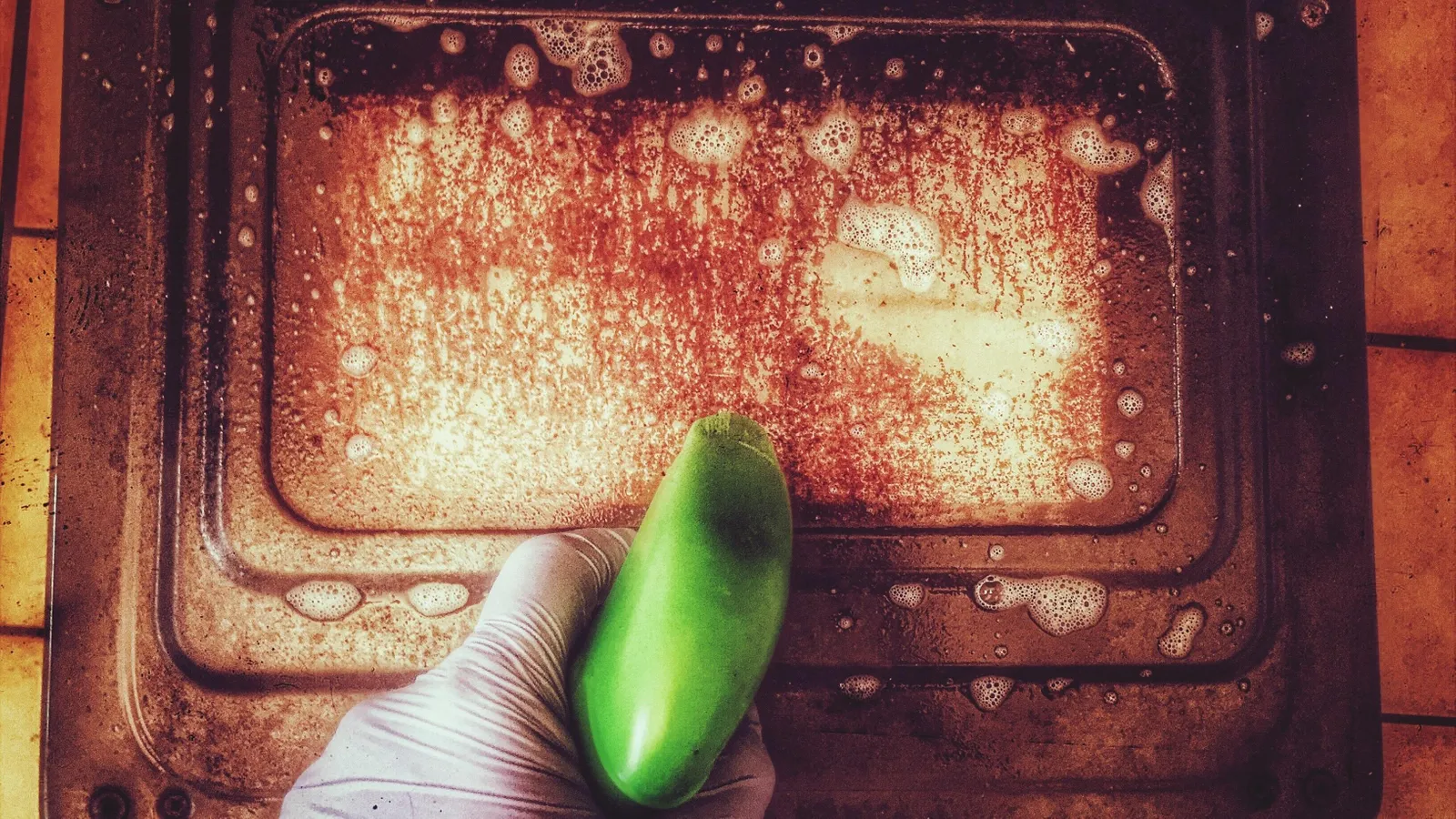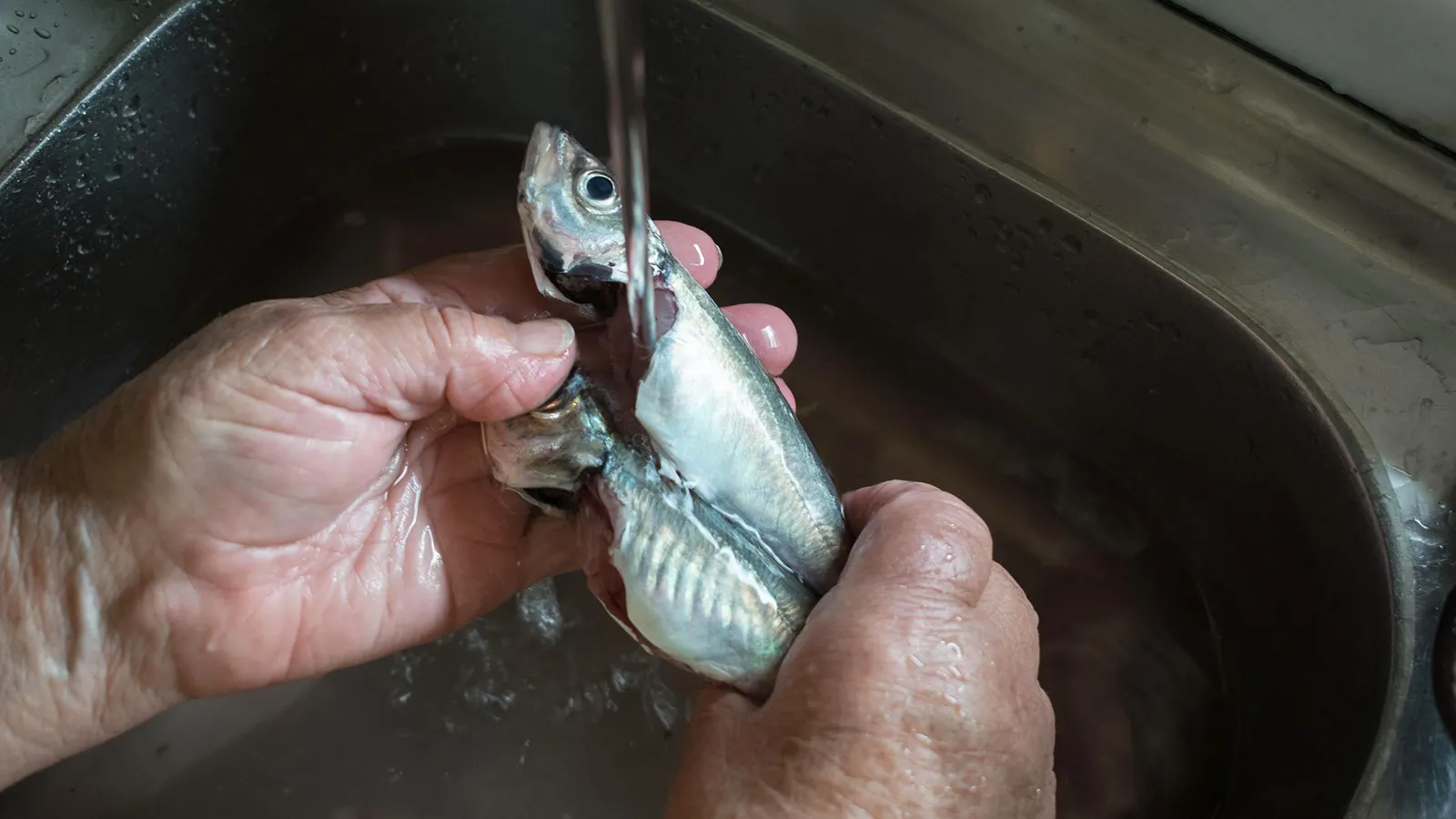|
Vinegar is a staple in housekeeping hacks and cleaning tips. BBC Future
looks at why it might just be the most useful product in your pantry.
|
|
 |
|
All it took was some white vinegar, a rubber band and a Ziploc bag.
Within 25 minutes, the limescale encrusted onto a metallic bathroom tap
had become so soft, it could simply be wiped it away with a toothbrush.
The hack is part of a viral trend on social media – #CleanTok –
involving online gurus sharing simple tricks with satisfying payoffs, as
dirt is erased to reveal sparkling surfaces.
But though there are thousands of commercial cleaning products out
there, many influencers choose to use vinegar. From de-greasing windows
to washing strawberries or transforming toilets, it seems there is
nothing this household ingredient can't do. It's being added to
dishwashers, washing machines, and even used by scientists to disinfect
laboratories. But what makes it so versatile?
Vinegar is made via a two-step fermentation process. First,
carbohydrates of any kind are fed to yeast cells, which turn their
sugars into alcohol and carbon dioxide. This alcohol is then exposed to
oxygen and fermented again, this time with the bacteria Acetobacter
instead of yeast, and voila – the alcoholic liquid is turned into a
mixture of water and acetic acid. It's the same phenomenon that produces
the sour flavour in wine that might have been accidentally been left
open overnight.
When it comes to cleaning, vinegar's most useful asset is arguably its
acidity – mild enough to not damage fabrics and surfaces, but strong
enough to get rid of stubborn stains and deposits. The household staple
can have a pH as low as 2.2 – around 10 times as acidic as the average
soft drink. Commercial vinegar tends to fall on the lower end of the
range, while homemade versions have a pH of around 3. When vinegar is
added to stains, particularly those caused by mineral deposits such as
limescale – a chalky build-up consisting mainly of calcium carbonate –
the acid helps to breaks it down. The reaction produces a salt – calcium
acetate, which readily dissolves in water – and carbon dioxide.
The other advantage of vinegar is its antimicrobial properties. While
some highly specialised bacteria can survive in acidic environments,
most everyday ones find it difficult to survive and replicate in these
conditions. Enter pickling, an ancient method of preserving food by
creating an inhospitable environment using salt and vinegar. Cleaning
with vinegar relies on the same logic, and research has found that it
can kill a range of pathogens, including E. coli. The product has been
found to be effective for a wide range of uses, from cleaning dentures
to disinfecting fruits and vegetables.
|
|
 |
|
Another popular cleaning hack is to apply vinegar to a surface that
needs to be cleaned, then sprinkle on some baking soda and watch as it
foams up – the same trick used to make the "lava" for volcanoes at
school. In this case, the reaction produces water and carbon dioxide
bubbles, which interact help to physically break up dirt. As a "base", a
substance that will react with an acid, baking soda is also useful for
drawing grease and stains into the cleaning liquid – it makes the
organic molecules within them more soluble in water.
However, there is one situation where vinegar should never be used: on
certain types of stone. Adding vinegar to limestone, travertine or onyx
floors, worktops or tiles will replicate the baking soda reaction –
these rocks contain calcium carbonate, which is also a base. As the
acetic acid in vinegar gets to work, you'll end up with a beautifully
clean surface – with holes in it.
Can vinegar be used for cleaning electronics?
Vinegar isn't recommended for cleaning the inside of electronic items
because it's an acidic liquid which can corrode metal parts. The
exterior of unplugged laptops and computer equipment can, however, be
safely wiped down with a mix of distilled water and vinegar sprayed on
to a microfibre cloth – spray onto the cloth and not the electrical
item, and don't plug it back in and turn it on until the streaks have
dried.
Even laptop and phone touchscreens – normally a no-no for harsher,
alcohol-based cleaners – can be cleaned with this approach. But the
impurities in vinegar, which mostly consists of undistilled water, can
present problems if it's used on circuit boards.
However, one realm where vinegar is a staple – film camera repairs.
Cameras stored for a long time with batteries often suffer catastrophic
battery leakage which can stop the camera working. Vinegar, it turns
out, is the solution, says Tokyo-based camera dealer Bellamy Hunt. "You
don't need much, just a Q-tip and some patience," he says. "And a sense
of wonder as the acid gently removes the corrosion, leaving your Q tips
a blue green. Science in action.
"For the battery compartment there is no better or cheaper alternative.
Unless of course you have a lemon tree in your garden."
Australian camera repairer Brett Rogers says it has other uses too. "It
is good for removing odours from really dirty kit, like gear that has
lived in a smoker's house for years. That can be gross. Usually I prefer
to attack exterior dirt and grime with a cloth and a little isopropyl.
But if something is really gross, out comes the vinegar.
"I have also used it on a few lenses that had severe haze. It is not my
first recourse. But if I have a real problem case and a lens is so bad
there is nothing to lose I'll try acetone or vinegar." Vinegar is a very
effective mould killer and the interior of camera lenses can easily
become infested in humid conditions; Rogers warns that even diluted
vinegar can be too harsh for some lens coatings, so tends to use it on
more modern optics.
Can vinegar banish odours?
The acetic acid in vinegar is itself highly pungent and one that not
everyone finds pleasant. It is a common component in body malodours, for
example. But as a mild acid, it will also readily react with odorous
alkaline chemicals (bases) such as ammonia, which create the strong
smell in concentrated urine, and trimethylamine, which has a distinctly
fishy odour.
Some cleaning enthusiasts recommend boiling a pan of vinegar to help get
rid of strong odours by turning the acetic acid into a vapour that might
more readily react with any volatile bases in a room. But concentrated
acetic acid vapours can also irritate the airways and eyes. Then there
is the lingering smell of vinegar throughout your home.
An alternative might be to treat the offending surfaces with vinegar
instead. The strong odour left by fish, for example, can be neutralised
by washing with a mild acid such as vinegar. It reacts with the amines
in the fish oils to form salts that cannot become airborne and offend
the nose. But lemon juice – which contains citric acid rather than
acetic acid – is often recommended as a more palatable alternative,
especially when it comes to getting the smell of fish off the hands.
Some vinegars – such as wood vinegar, which is far more pungent that the
household malt and wine kinds – have even been found to be effective at
neutralising the powerful stench from pigsties.
So, vinegar can have a range of household uses, though there are some
situations where it might be best to opt for a commercial alternative.
And whatever you do, don't use the balsamic kind – unless you want to
spend hours scrubbing out that stain, too.
|